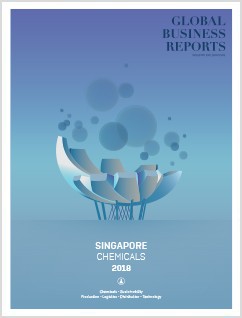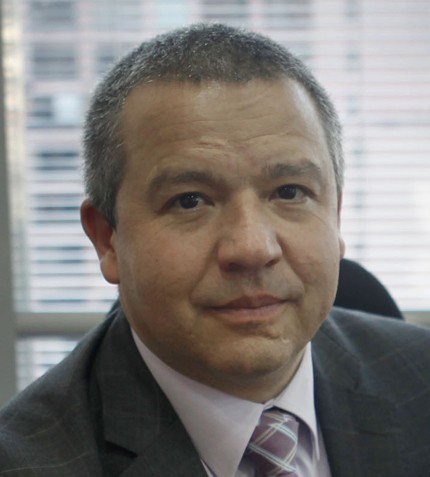
"Many countries in the region use Singapore as a reference point for building regulations, which increases regional standards."
RELATED PUBLICATION
ARTICLES FROM THIS PUBLICATION
- Singapore’s Chemicals Sector is Undergoing a Transformation
- For a Rainy Day: Singapore targets water self-sufficiency
- Manpower Constraints a Persistent Burden for Industry in Singapore
- Singapore’s Chemical Producers: Feeding Asia’s Appetite
- Distribution: Streamlining the Channels
- The Brave New World of Chemicals
- Prosperity or Penury – Singapore's Petrochemicals Industry Faces Challenges to Re-invent Itself
Jeremy Rowe
MANAGING DIRECTOR OF DECORATIVE PAINTS, SOUTH EAST, SOUTH ASIA AND MIDDLE EAST, AKZONOBEL PAINTS
Can you update our readers on the recent developments at AkzoNobel following the separation of the specialty chemicals division?
The prospective sale of AkzoNobel’s specialty chemicals division to the Carlyle Group and Singapore sovereign wealth fund GIC for US$12.4 billion was recently announced. The internal separation work was completed last year and the legal separation occurred on 1st January 2018. The process was carried out quickly and efficiently and the market has reacted positively to the process.
We still have manufacturing capabilities in Singapore following the separation, but much of our focus in the city-state will be on R&D, as well as the global HQ for Marine, Protective and Yacht Coatings and as regional HQ for Decorative Paints. 33% of our paints and coatings business is in Asia Pacific, which highlights the importance of this region to AkzoNobel.
What is AkzoNobel’s current strategy in Singapore and the Asia-Pacific region?
With a third of our global business in Asia Pacific and 50% in emerging markets, our strategy moving forward will be to maximize our opportunities. We generally look at Asia in two groups – China, which will soon emerge as the largest paints market in the world, alongside the rest of North Asia as one part; and the second part incorporating South Asia, Southeast Asia and Australasia. For Decorative Paints we also look after the Middle East from Singapore. We see a number of commonalities between these jurisdictions so decided to integrate them into one unit.
Although we have always prioritized organic growth, we are also carrying out smaller bolt on acquisitions, especially in the past two to three years. Acquisitions will tend to happen when we identify a certain technology, specialization or geographic footprint that we want to move into. This has recently included a powder coatings business in Thailand and BASF’s global industrial coatings business. The market is still fragmented and there are a lot of opportunities to grow organically and inorganically. Powder coating is an interesting sector that we, as the market leaders, will look to consolidate. It is one of the fastest growing sectors due to its logistical and applicatory benefits and its zero VOC content.
With a footprint spanning the whole continent, do differing regulations on paints affect your business opportunities across the region? There are different sets of regulations across the whole of Asia. At AkzoNobel, we keep to two key principles. We must meet all country specific regulations as well as our own higher internal regulations. Typically, we are ahead of most countries with respect to regulations. In the region, China is moving particularly fast with its regulations in areas such as solvents, VOC and emissions in general. One area of concern for us is that some countries do not have formal laws against usage of lead in paint – something we removed from our paint many years ago. Although this gives a cost advantage to competitors, we continue to prioritize sustainability, health and safety.
Singapore is a leader in the region when it comes to developing regulations through its system of governance, measurement and incentives. This is why Singapore sets ambitious targets on green buildings, for example. What is positive is that many countries in the region use Singapore as a reference point for building regulations, which increases regional standards.
With the Singaporean government aiming to green 80% of buildings by 2030, what sort of technologies and innovative solutions are AkzoNobel creating to meet these goals?
As a manufacturer, we need to respond to these standards and push ahead of them. More recently, we have introduced solar reflectance into our products to manage temperature as well as a range of products to increase durability, sustainability, and boost productivity.
How is government regulation driving the adoption of sustainable solutions across Asia Pacific?
We believe that Singapore’s Green Building scheme is a great example where a government is driving change. As it is incentive-based, it is business friendly as well. It is beneficial for the developer as well as they receive higher ratings for creating Green Buildings. In other countries, like India and in the ASEAN, these solutions are driven a little more by developers to help market and make their properties distinctive. However, we see governments moving quickly and we already have local Green Building Councils in almost every country that we operate in.
How well prepared is AkzoNobel for the impending carbon tax?
We have been working on this internally for quite a few years. One of the main challenges was measuring our own carbon footprint due to the large number of raw materials we work with and in which much of our carbon footprint is embedded. Having spent a few years measuring this, and our own carbon emissions, we are ready for the carbon tax. Reducing carbon emissions is an outcome that all industries will face and we have set ourselves a task of reducing our 2010 baseline measurement by 30% by 2025 and be carbon neutral by 2050. It is good to see a government putting forward legislation on this matter to help everyone move in the right direction.
Can you provide our readers with a final message?
Akzo Nobel has had a long history with a number of transformations. The most recent one with the separation of the paints and coatings divisions from the specialty chemicals division will be critical to our history because it creates two high performing companies that will benefit from being separate and able to take their own course. This is a key year for AkzoNobel and we are looking forward to invest in both businesses around the world and drive them to continued success in their respective industries.











